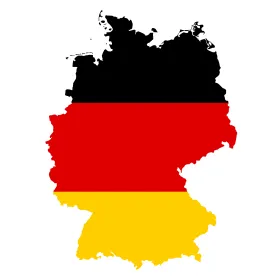Hamburg, Germany – Not only known for its famous seafood and the third largest European seaport for goods and cargo handling1, but also a considerable and noteworthy jurisdiction when it comes to the protection and enforcement of trade mark rights in preliminary proceedings.
The Higher Regional Court of Hamburg found in a recent trade mark dispute in preliminary injunction proceedings (Decision of 29 September 2022 – 5 U 91/21) between the “Deutsche Telekom” (“Claimant”) and the Spanish telecommunication company “Telefónica” and its German subsidiary (together “Defendants”), that the application and use of a “T” consisting of five dots in combination with various Telefónica company symbols (e.g. shown below left and middle) (“Contested Signs”) constitute an infringement of the well-known “T-brand” (shown below right) (EUTM 215194 ; DE 39529531) of Deutsche Telekom (“T-Trade Mark”).
.
The Court found that there was a likelihood of confusion between the opposing signs, confirmed that the “T”-brand has a reputation within the meaning of Art. 9 (2) lit. c) of the EU Trade Mark Regulation (Regulation (EU) 2017/1001), and therefore concluded that the defendant’s trade mark infringes the claimant’s trade mark rights resulting in the grant of a preliminary injunction (“PI”).
What has Happened?
In April 2021, Telefónica announced a re-branding of its brand and afterwards filed various trade mark applications with the EUIPO that included the aforementioned “T” consisting of five dots, alone and in different combinations with various company symbols. The Contested Signs have been used by Telefónica in a corresponding press release in English language and on its English website in a video concerning the announced re-branding. Its German subsidiary also used the Contested Signs on the websites and they have been used on various social media websites (e.g. Twitter, LinkedIn, and YouTube).
Immediately after becoming aware of the trade mark application and the use of the Contested Signs, the Claimant sent the Defendants a warning letter and, after their rejection to sign a cease and desist declaration, sought a PI against the Defendants.
Besides the claim for injunctive relief due to the actual use of the Contested Signs, the Claimant additionally argued that its claim for injunctive relief is also justified because of the mere application of the Contested Signs by Telefónica.
What Did the Higher Regional Court of Hamburg Find?
First, the Higher Regional Court of Hamburg confirmed the existence of a likelihood of confusion between the Claimant’s T-Trade Mark and the Contested Signs and found that the Claimant’s trade mark has a reputation in the meaning of Art. 9 (2) lit. c) EU Trade Mark Regulation and the corresponding provision in § 14 (2) No. 3 German Trade Mark Act, so that the trade mark infringement claim is generally justified.
With regard to the use of a mark as a trade mark in the course of trade, which is generally required for a claim for injunctive relief, and the claim for injunctive relief based on the mere application for registration of the mark, the court noted that the mere application and registration of an infringing mark constituted an imminent use of the registered mark as a trade mark in the course of trade. For the infringement claim and the risk of repetition required for the injunction claim, this means that the mere application and registration of a trademark does not justify the assumption of the obligatory risk of repetition, since the sole registration is not equivalent to the use of a trade mark in the course of trade. The opinion, that the mere application and registration of a sign as trademark do not in themselves constitute the use of a sign as a trade mark for the goods or services claimed, so that this do not yet constitute an infringement of a prior trademark, has already been confirmed by the German Federal Supreme Court for German trade mark law in a judgement in 2008.2
Despite the lack of risk of repetition, the Higher Regional Court of Hamburg considered the trademark infringement claim and thus the issuance of a preliminary injunction to be justified due to the danger of first infringement. The danger of first infringement is a comparable procedural prerequisite to the danger of repetition, which – unlike the danger of repetition – already exists when there is a serious threat of infringement of a legal interest protected by the legal system and insofar factual indications of an imminent infringement of the protected legal interest exist. This means that an actual infringement of the trade mark is not a prerequisite for the assumption of the risk of first infringement, but that there must only be factual indications which justify the assumption that the defendant will carry out an illegal act in the near future.3
In this regard, the Hamburg court stated that such a danger of first infringement is already established by the application for an infringing trade mark, because the application for an infringing trade mark regularly gives rise to the presumption that the use of the sign as a trade mark for the registered goods or services is imminent in the near future, unless there are concrete indications which argue against such future use.4 Such concrete indications arguing against a future us as a trademark, must be substantiated by defendant.
The Higher Regional Court’s opinion, that the mere application and registration of an infringing trade mark regularly gives rise to the presumption that the use of the sign as a trade mark for the claimed goods or services is imminent in the near future, unless there are concrete indications arguing against such future use that must be substantiated by the defendant, has also been confirmed by the German Federal Supreme Court in other trade mark cases in 20105 and 2014.6
What Does This Judgment Mean in Terms of the Protection and Enforcement of Your IP Rights?
In case of a mere trademark application without accompanying use in the course of business, it is possible to enforce infringement claims by way of a preliminary injunction.
However, it should be taken into account that if the defendant revokes the application, the trademark owner may not request an undertaking regarding the non-use in the future as the revocation of the trademark is deemed to be sufficient to exclude an infringement and the danger of first infringement.
Likewise, it is therefore naturally advisable to file a corresponding trademark opposition with the relevant trademark office in order to directly obtain cancellation of the infringing trade mark and prevent registration. The German local courts deciding on the trademark infringement have no authority to decide on the validity. This must be decided by the German Patent and Trademark office or the Federal Patent Court.
FOOTNOTES
-
https://de.statista.com/statistik/daten/studie/255147/umfrage/haefen-in-europa-nach-containerumschlag/
-
BGH, judgment of March 13, 2008 – I ZR 151/05, para. 24 – Metrosex.
-
BGH, judgment of March 13, 2008 – I ZR 151/05, para. 17 – Metrosex.
-
Higher Regional Court of Hamburg, judgement of September 29, 2022 – 5 U 91/21, para. 144 – Telekom-T.
-
BGH, judgment of January 14, 2010 – I ZR 92/08, para. 24 ¬ DDR-Logo.
-
BGH, judgment of January 22, 2014 – I ZR 71/12, para. 30 – Real-Chips.





 />i
/>i

